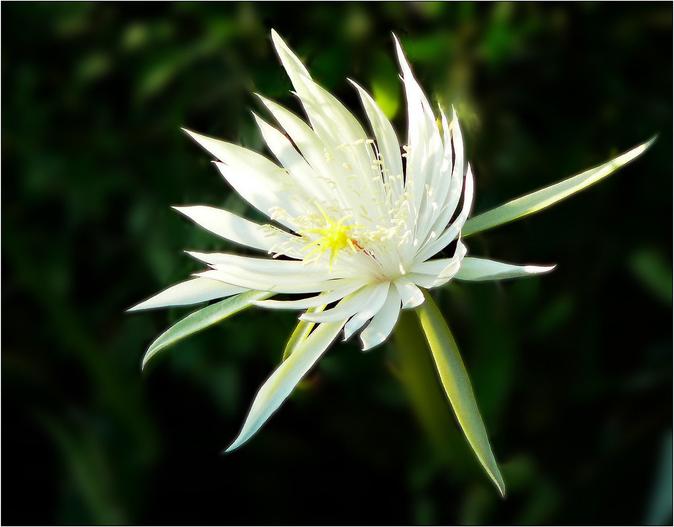Nightblooming Cereus
(Epiphyllum hookeri)
Nightblooming Cereus (Epiphyllum hookeri)
/
/

Surely Shirly
CC0 1.0
Image By:
Surely Shirly
Recorded By:
Copyright:
CC0 1.0
Copyright Notice:
Photo by: Surely Shirly | License Type: CC0 1.0 | License URL: https://creativecommons.org/publicdomain/zero/1.0/ | Uploader: Surely Shirly | Publisher: Flickr

















Estimated Native Range
Summary
Epiphyllum hookeri, commonly known as Nightblooming Cereus or Nightblooming Cactus, is an evergreen succulent native to tropical rainforests of Central America , South America, and Trinidad-Tobago, where it thrives in the understory and on trees as an epiphyte. It typically grows to a height and width of 2-3 feet (0.6-0.9 meters), with long, leafless, and flat green stems that function as leaves. The plant is renowned for its nocturnal, fragrant flowers that bloom in the summer, opening at night and closing by morning. These flowers can be quite showy, with a combination of pink, red, and white hues, and can reach up to 8 inches (20 cm) in diameter.
Nightblooming Cactus is valued for its unique flowering habit and is often grown in hanging baskets or as a potted specimen on patios and in conservatories. It prefers partial shade to mimic its natural rainforest habitat, requiring protection from intense afternoon sun. While it can tolerate low water conditions, it benefits from regular watering and high humidity, especially during the growing season. Well-draining soil is essential to prevent root rot. It is not typically used for culinary or medicinal purposes but is admired for its striking nocturnal blooms. In cultivation, it is relatively low maintenance but can be susceptible to mealybugs and scale insects.CC BY-SA 4.0
Nightblooming Cactus is valued for its unique flowering habit and is often grown in hanging baskets or as a potted specimen on patios and in conservatories. It prefers partial shade to mimic its natural rainforest habitat, requiring protection from intense afternoon sun. While it can tolerate low water conditions, it benefits from regular watering and high humidity, especially during the growing season. Well-draining soil is essential to prevent root rot. It is not typically used for culinary or medicinal purposes but is admired for its striking nocturnal blooms. In cultivation, it is relatively low maintenance but can be susceptible to mealybugs and scale insects.CC BY-SA 4.0
Plant Description
- Plant Type: Succulent
- Height: 2-3 feet
- Width: 2-3 feet
- Growth Rate: Moderate
- Flower Color: Pink, Red, White
- Flowering Season: Summer
- Leaf Retention: Evergreen
Growth Requirements
- Sun: Part Shade
- Water: Medium
- Drainage: Fast
Common Uses
Drought Tolerant, Low Maintenance, Potted Plant
Natural Habitat
native to tropical rainforests of Central America , South America, and Trinidad-Tobago, where it thrives in the understory and on trees as an epiphyte
Other Names
Common Names: Hooker’s Orchid Cactus, Nopalillo De Hooker
Scientific Names: , Epiphyllum hookeri, Epiphyllum phyllanthus var. hookeri, Cereus hookeri, Epiphyllum ruestii, Epiphyllum strictum var. ruestii, Phyllocactus hookeri, Phyllocactus marginatus, Phyllocactus ruestii, Phyllocactus stenopetalus,
GBIF Accepted Name: Epiphyllum hookeri (Link & Otto) Haw.